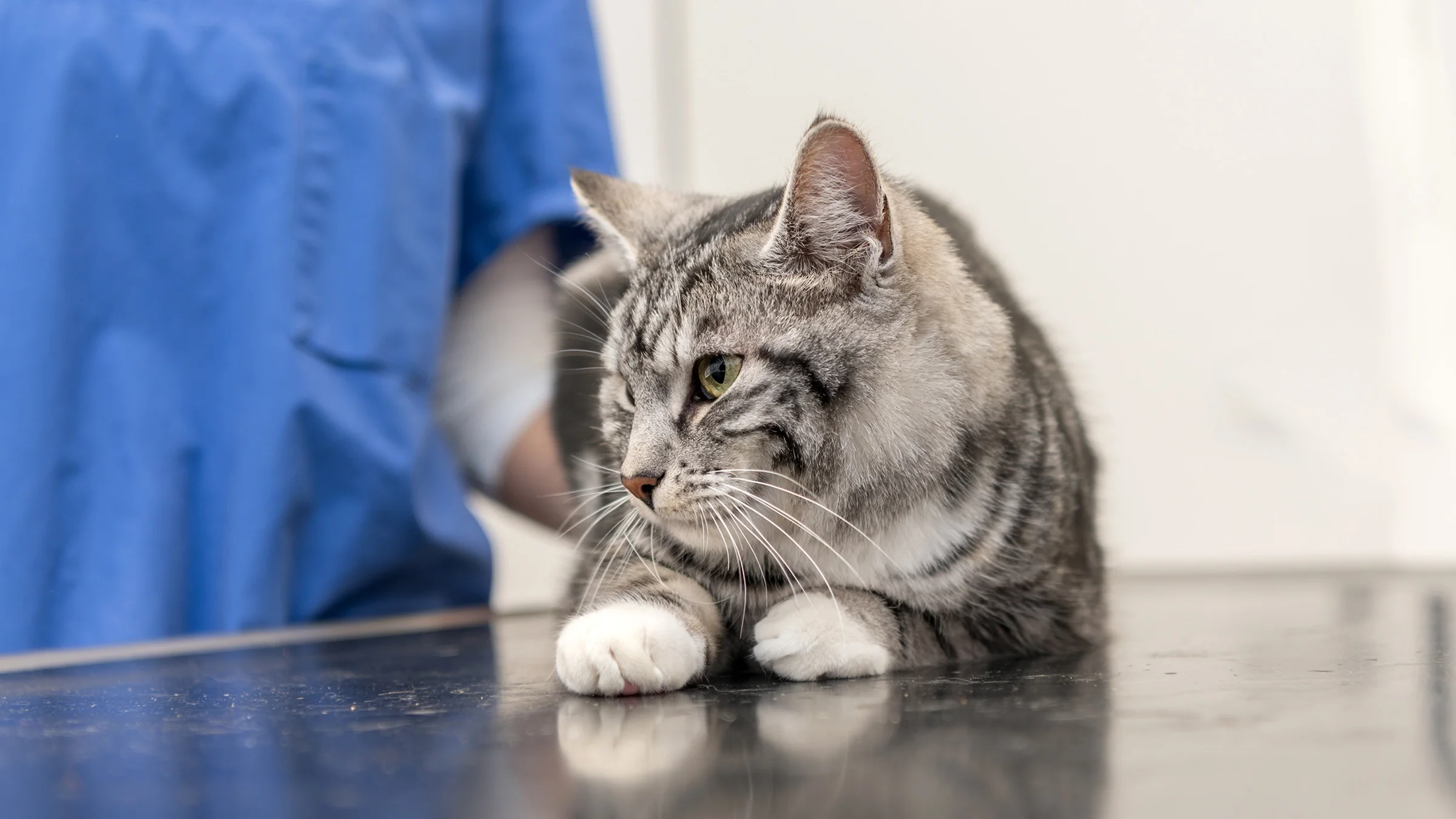Key takeaways:
Arthritis is a painful condition where the cartilage between a cat’s joints wears away over time.
Signs of arthritis in cats include decreased activity, reclusiveness, irritability, struggles with the litter box, decreased grooming, and weight loss.
Treatment for arthritis in cats usually involves a combination of medication, diet changes, exercise, physical therapy, supplements, and arthritis injections.
Arthritis is a long-term condition in cats where the cartilage between their joints wears away. This results in the bones rubbing against each other, causing pain. In the past, arthritis wasn’t commonly diagnosed in cats. But research suggests that 90% of cats over 12 years old have arthritis.
The most common sign of arthritis for dogs is difficulty with walking. For cats, this isn’t always the case.
What are the earliest signs of arthritis in cats?
Arthritis in cats can be difficult to spot. Cats are very good at hiding their discomfort. But it’s still a good idea to watch for these seven signs of cat arthritis — especially as they age.
Search and compare options
1. Decreased activity
Cats who have pain from arthritis will likely stop being as active. They might become reluctant to do certain things like:
Play
Jump
Walk up and down stairs
If they do try to jump, they might attempt it multiple times before finally making the leap.
2. Reclusiveness
In addition to being less active, cats with arthritis may also hide more often. Some might not move for long periods of time or react to things that usually make them get up, such as the sound of being fed or their owner coming home.
3. Behavioral changes
Changes in your cat’s behavior related to arthritis might be subtle and hard to notice at first. Your cat might become irritable or avoid attention. They might flinch or pull away from being pet by you. Or they could bite or scratch you in response to touching a sore area.
4. Litter box behavior changes
Because arthritis is painful, your cat might have trouble getting in and out of their litter box. They also might struggle with positioning themselves in it. This could result in your cat going to the bathroom outside of or next to the litter box.
Feline arthritis treatments: If your cat is diagnosed with arthritis, don’t despair. There are many treatments and modifications that can support your cat’s well-being.
Other signs of pain: Cats are good at hiding their pain. But if you learn to recognize these common signs of pain, you’ll be able to get your cat help sooner.
Pain medication options: There are a number of pain medications available for cats. Learn about some of the most common options and what they’re best used for.
5. Weight loss
Despite a decrease in activity, some cats may lose weight due to arthritis. This could be caused by a loss of appetite or a loss of muscle mass.
6. Decreased grooming
Feeling stiff or in pain can make grooming difficult for cats. If your cat doesn’t groom themselves as often, their coat could become matted or tangled.
7. Hair loss around the joints
Some cats with arthritis may repeatedly lick or groom areas where they feel pain, such as at their joints. Excessive grooming due to pain can lead to hair loss.
How is arthritis in cats diagnosed?
Diagnosing arthritis in cats is usually done with different tests. These tests include:
Physical examination
Neurological examination
Blood work
X-rays or CT scan
Cytology
Your veterinarian may perform a few or all of these tests. Some may be used to rule out other conditions or diagnose any existing conditions.
Achieving a diagnosis of arthritis in cats can be hard and take time. Cats aren’t always willing to let veterinarians physically exam them. And they hide their pain well.
How do you treat arthritis in cats?
Treating arthritis in cats usually involves a combination of strategies to reduce pain symptoms. The most common arthritis treatments for cats include:
Injections like Solensia
Medication to relieve pain, such as gabapentin
Joint supplements like omega-3 fatty acids or glucosamine
Diet changes to reduce weight if necessary
Exercise to strengthen muscles and lose weight
Medication to reduce inflammation, such as nonsteroidal anti-inflammatory drugs (NSAIDs)
Physical therapy
Laser therapy
If your cat doesn’t respond to any of the available therapies, surgery might be an option. Talk to your veterinarian if your cat continues to have trouble while receiving treatment.
What are the risk factors for arthritis in cats?
The biggest risk factor for arthritis in cats is age. The life expectancy of cats has greatly increased over time. Cats who live longer have a higher chance of experiencing a breakdown around their joints as they age. This is known as primary arthritis.
Being overweight is another risk factor. But not all cats with arthritis are overweight, and not all cats who are overweight have arthritis.
If a cat is injured or develops abnormally, their risk for developing arthritis can also increase with age. This type of arthritis is called secondary arthritis. In these cases, trauma from the injury or abnormality can cause damage to the cartilage between the joints, leading to arthritis.
How can you make a cat with arthritis more comfortable?
Simple modifications at home can also help your cat with arthritis. Such modifications may include:
Using raised bowls for food and water
Switching out litter boxes for ones with lower walls
Getting orthopedic beds
Using steps or stairs so they don’t have to jump
Adding nonslip flooring such as area rugs
Keeping water and litter boxes on each floor of the home
Cats with arthritis shouldn’t go outside unsupervised. With arthritis, they can’t defend themselves as well. So it’s best to keep them inside at all times.
The bottom line
Arthritis in cats happens when the cartilage between the joints is worn away with age. Signs of arthritis in cats include changes in behavior, such as reduced activity, reclusiveness, decreased grooming, and weight loss.
Arthritis in cats is treated with several therapies, including joint supplements, medication, and diet and exercise changes. Other treatments, like physical therapy and laser therapy, are also available.
You can keep your cat comfortable by modifying your home with raised food and water bowls, steps to favorite sleeping areas, litter boxes with lower walls, and orthopedic beds.

Why trust our experts?



References
Cornell Feline Health Center. (n.d.). Is your cat slowing down? Cornell University College of Veterinary Medicine.
Jaffe, M. (2023). Diagnosis and management of feline osteoarthritis. Today’s Veterinary Practice.
Little, S. (2015). Stiff, sore Cats: Taming feline arthritis. World Small Veterinary Association World Congress Proceedings.
Lundgren, B. (2019). Arthritis in dogs and cats: What can be done? Veterinary Partner.
Moriello, K. A. (2025). Hair loss (alopecia) in cats. Merck Veterinary Manual.














